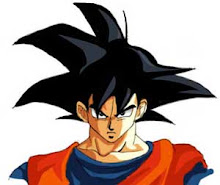
Thursday, 31 December 2009
Soft Tissue Wound Healing

- Specialised tissue is replaced by proliferation of surrounding undamaged specialised cells
- L.T replaced by G.T which matures to form S.T
- Lost tissue is replaced by granulation tissue which matures to form scar tissue
Factors known to delay healing
Monday, 28 December 2009
Connective Tissue
Leukocytes - Soldiers of the body
- Most common type of leukocyte
- Involved with degradation of foreign material through phagocytosis
- Contain multiobed nucleus
- Cytoplasm grainy in appearance due to high number of lysosomes (digestive enzymes)
- Grows around foreign matter, lysosomes help digest foreign body and then it's removed
- Duty to defend using lysosomes to digest
- On a constant patrol, destroying harmful things in the body


MACROPHAGE (monocytes)


- Destroy bacteria through phagocytosis
- Larger in size than neutrophils
- Found in LUNGS and LYMPH NODES (first line of defence)
- Creates hostile environment for bacteria so that it si harder to get ill (causes sore throat etc)
LYMPHOCYTES (B & T)



- B lymphocytes secrete antibodies which destroy bacteria
- T lymphocytes are involved in cell destruction
- Some specialised lymphocytes go into cell to destroy it, others send antibodies out
Saturday, 26 December 2009
Hematoma
Wednesday, 23 December 2009
Phagocytosis




Normal Ranges of Movement
Hip Extension: 15 degrees
Hip Abduction: 50 degrees
Inversion: 45 degrees
Eversion: 20 degrees
Knee Flexion: 130 degrees
Sunday, 13 December 2009
Cross Fit WOD 13/12/09
Friday, 11 December 2009
Proprioceptive exercises

Good proprioception (awareness of limb position in space and time) is essential for all tasks, whether complex or simple. Picking up the remote to watch TV or doing a single leg squat on a BOSU all require varying degrees of proprioception or neuromuscular control. Essentially proprioception is this relationship between the neurological system and the muscular system and any injuries that occur e.g. trauma can cause a disruption between the the communication of these two systems. Sensory (afferent) feedback is interupted (like your Mum asking you to do the washing up when you're on the phone) and this has reprecussions on motor control (you drop the phone!)
2. ALTERING BASE OF SUPPORT

3. INCREASING WEIGHT BEARING

5. MAKING AN EXERCISE MORE COMPLEX (e.g. adding pertubation)

Thursday, 10 December 2009
Mechanoreceptors !
Wednesday, 9 December 2009
Sag Sign

Lachman's Test (modified PA drawer)
Rectus Femoris (Has 2 heads)
Cross Fit 9/12/09
- 30 kettlebell swings (32kg)
- 3 consecutive muscle ups (DONE! 4 ring muscle ups in a row)
- 30 muscle ups for time in 12 minutes
- Back squat 3 rep max above 100kg (DONE! 102.5 kg)
- 2 consecutive bar muscle ups
Today worked on acrobatics, muscle ups, kettlebell swings, handstand push ups, K2E, and back squats.
Was happy with everything but back squat needs work, tech for muscle ups in a row needs some practice to make it efficient. Good sesh!
Monday, 7 December 2009
Contraindications to ICE

- The elderly
- Circulatory Problems
- Radiotherapy/chemotherapy
- Raynaud's Disease
- Diabetes
- Hypersensitivity
- Cardiac Problems
*Raynaud's disease is a vascular disorder which effects blood flow to the extremities (toes,nose,fingers,ears) when exposed to cold temperatures or psychological stress.
*The elderly: skin is thin and risk of ice burns
*Diabetes: blood becomes viscous, ice will force thick blood though a small vein
MOVE THE ICE TO THE LIMB NOT THE LIMB TO THE ICE!
USE A BARRIER BETWEEN ICE AND SKIN TO PREVENT BURNS!
REGULARLY MONITOR BODY FOR EXCESSIVE CIRCULATION LOSS!
DURATION OF TREATMENT SHOULD MATCH SIZE OF AREA BEING TREATED!
Should be 10-20 minutes every 2 waking hours over the acute and sub-actute stages until demand no longer necessary
Mobilisation
Slow, controlled, preferably unloaded movement of a joint through a full ROM (pain free) in all available planes of motion.
Mobilisation will improve/maintain mobility of a joint
Remember: Psychologically people might refrain from certain movements because it has hurt them in the past. Passive movements can promote confidence and encourage them to start moving the joint again :)
Contraindications to joint mobility work:
- Pain
- Heat/inflammation (swelling)
- Recent unstable fractures
- Neurological symptoms (spasms, numbness, pins & needles, dead shoulder = nerve impingment)
- Mechanical blocks (e.g. bursas trapped under acromion head)
Thursday, 3 December 2009
Cross Fit WOD 03/12/09 Muscle Ups
Jay - 13.49
My target for next time is 12 mins or under. I found with this that muscle fatigue and rate of recovery plays such a big role. To begin with I was getting out 5 reps at a time quite quickly but then it got to a point where after one rep my arms would just not get me up! The dip and the lock out where the most demanding parts. Keeping good form and technique helped A LOT! I was glad I'd watched a vid on tech before I headed down to the gym. Aside from that for a first stab at it I don't think I did too bad at all. The dip is the part that needs work :)
Wednesday, 2 December 2009
Gluteus Maximus
CROSS Fit WOD 2/12/09
3 rep max training:
Power Clean - 70kg
Shoulder Press 50kg (2.5 reps 55kg)
Deadlift - 155kg PB
Monday, 30 November 2009
Bones of the Foot

Grades of sPrains

































